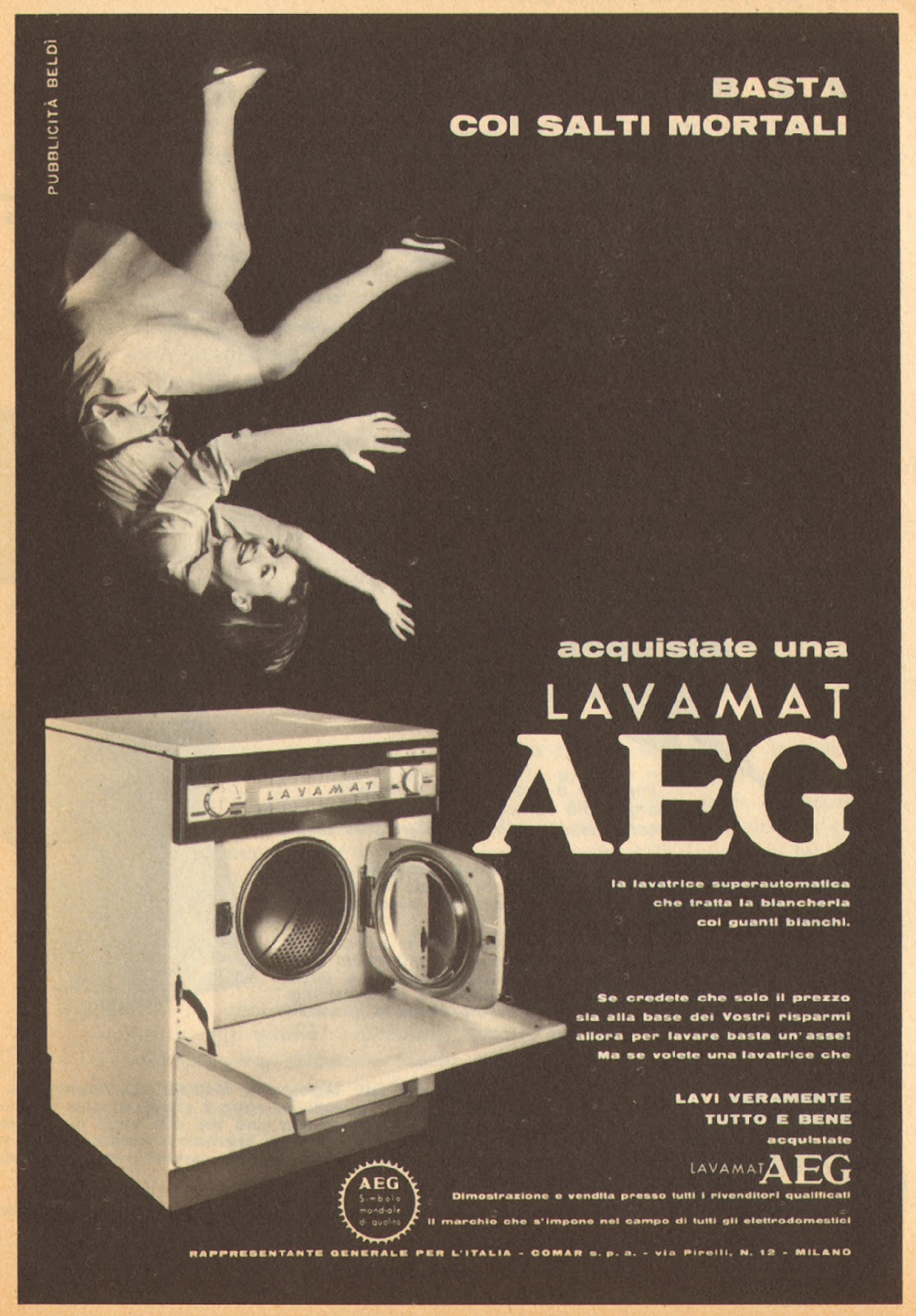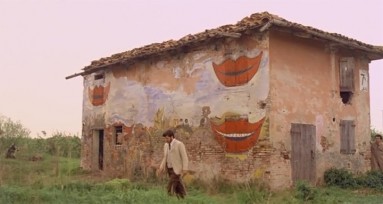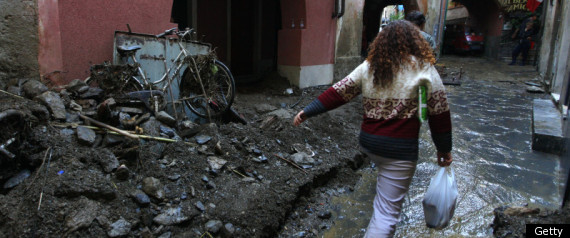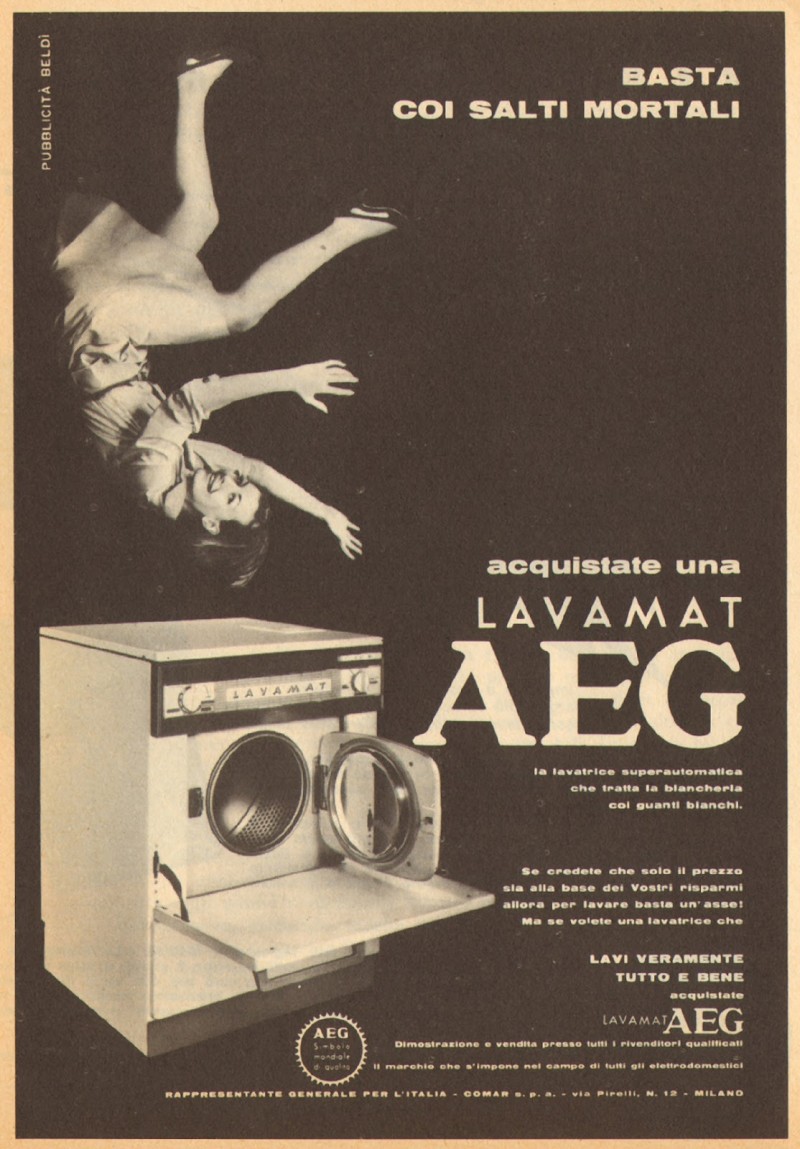This text, “On the construction of feminist committees”, is from the same group - the Comitato Triveneto - who wrote the “Women in armed struggle” text I posted two days ago. The source from which I’m working presented this as an abridged text, marked by the […]. If I can track down a more complete version, I’ll add in.
Translation first, then a few comments.
“On the construction of feminist committees”
(…) we of the Triveneto Committee have constructed our political perspective along indications that had already emerged from the women’s struggle for state assistance [welfare] in the United States and in Great Britain. That is, the political program of “more money and less work” posed by women, which necessarily had to pass through the demand of money for the work of raising kids, was already a demand of money as a salary for domestic labor and was really concretized in those struggles, characterizing them as the first struggles of attack.
The demand of money for the work of raising kids, through the new level of force that the emergence of this struggle had given to women, quickly became the demand of a salary for domestic labor, as labor that we do not only to raise kids or a husband or families in general, but also to reproduce ourselves, our own labor-power.
In fact, to reproduce yourself is labor.
“One who lives unwaged in the capitalist world, when she does the cleaning, when she cooks, washes, makes the bed, she always reproduces labor-power, her own above all, which must always be made at the disposition of the bosses, whether or not the bosses “give the thanks” they would for a salaried job, whether or not they leave her to survive by being employed by the salaried (husbands, fathers, “lovers,” various kind) while working for free.”
Why have we defined the struggle of women for state assistance in the United States and in Great Britain as struggles of attack and said that it was looking carefully at these that gave clear definition to the perspective according to which we act?
Women, at the mass level, have for long time conducted an ongoing struggle: essentially, a struggle of resistance against the intensification of their exploitation that the state, particularly in advanced capitalist countries, started organizing in an increasingly burdensome way.
Women have reduced, in a vertiginous way, the number of kids in the United States and in eastern and western Europe, dropping the birth rate to zero and below. And this occurs with the same force in capitalist countries and so-called “socialist” countries.
Why, from the woman’s side, has reducing the number of kids meant and does mean to the struggle against the intensification of her exploitation?
Every child already represents, in the capitalist family, a new mass of domestic labor, an aggravation of a situation of a woman’s personal dependence on male salary, further burdening† her situation of social isolation.
But we should add that the more capital tried to increase the level of working class exploitation in the factories, offices, and village, the more it also generated an ever greater mass of domestic labor, labor destined to reproduce the working class itself.
Each child fewer has and does mean for women a resistance against the intensification of the exploitation of that labor.
This struggle is registered through a spontaneous, mass behavior on the part of women in all the “advanced capitalist” countries, but this behavior hasn’t yet translated into a organized network through which to transform this struggle of resistance against labor into an organized struggle to counteract all the conditions of this labor, first of all its gratuity.†
From this struggle, one that was able to redefine, in a certain sense, the material conditions of life for us women, insofar as has it imposed a brake on the last time-cuts
We constructed a dam of defense. Now we have to construct for ourselves a weapon of attack against the exploitation of domestic labor that intensifies every more against us.
[…] The women in Great Britain and in the United States, differently than us in Italy, had been able to cling to an initial raft of money, the “welfare” that other women and men had won in the yeas before through hard struggle. But to organize this new phase of attack, to have more money, to refuse the police controls that the state wanted to put onto them, we had to had to overcome our own difficulty. They had discovered that amongst the numerous disadvantages of domestic labor, there were also contradictions, advantages, if one can say this, that could be really used for the organization of the struggle itself. And this definitively broke with a certain conviction that the lefts†
Not only had the struggle over “welfare” contradicted similar assertions, but our first organized practices were destined to show that things were not so.
It is useful, however, to really clarify for ourselves this possibility within the Movement, to see what are the contradictory aspects of our condition that, where there is a disadvantage, if one looks closer, we discover also the possibility of an advantage. We start with several aspects specific to domestic labor:
1) The house, within which we perform the main part of such labor, is atomized inside thousands of “4 walls”, but it is present everywhere, in the country, in the city, in the mountains, etc.
The metropolis is our “large factory, the city is our “medium factory,” the village is our “little factory.”
2) We have controlled and commanded millions of junior bosses and supervisors: they are our husbands, fathers, brothers, etc, but in compensation, we have only one boss, the State.
3) Our comrades in labor and struggle, who are our neighbors, aren’t physically in contact with us while working as in a factory: but we can meet each other in places where all have to pass, utilizing those famous little lapses in time during the day. And none of us is separated from an other by a stratification of qualifications and categories. We all do fundamentally the same work. Even the specificity of our working day brings us at the same time to the point of these contradictions. Our working day, in fact, unlike the male working day, is almost unlimited: never a moment of time to take care of ourselves or to rest.
But in this day, there are commas of time that we can use to organize the struggle.
The management of how our work is organized lies in our hands: even if its organization is marked by the rhythms of the factory and the school, we still have a certain elasticity in how we arrange our work for the week. But what use to make of our labor in terms of organization?
Other problems derive further from the specificity of the goods we produce. We don’t produce things but persons. To produce workers rather than means of sustenance implies new contradictions in the actions of the strike as one form of struggle and absensteeism as an other. If we were to strike, we don’t leave objects unfinished or materials unworked, etc; that is, interrupting our labor, we don’t paralyze the transformation of one things into another thing, but we paralyze the everyday reproduction of the working class. This will really hit right into the heart of capital because it would become a thorough-going strike, drawing in those who usually went on strike without us, but, just at the moment in which we would no longer guarantee the survival of those to whom we are emotionally tied, we will face certain difficulties in continuing our resistance. Nevertheless, every blow that we succeed in inflicting opens irrecuperable voids in the capitalist organization of labor. In fact, if we were not the final front where capital has always recuperated everything, for every thing we won there would be no other possible fronts of recuperation.
[from <<8 marzo 1974>> Marsilio eds, 1975]
---
A few comments - less historical backdrop than theoretical analysis - on the text and some of its animating concepts, deriving from three particular moments in it.
First, its spatial understanding:
The house, within which we perform the main part of such labor, is atomized inside thousands of “4 walls”, but is present everywhere, in the country, in the city, in the mountains, etc.
The metropolis is our “large factory,” the city is our “medium factory,” the village is our “little factory.”
If a number of these critiques produced a certain shock to thought, accompanied by the sense that they troubled the basic tenor of a host of presuppositions, one can’t be surprised: there is a highly potent kernel of horror here. I mean “horror” in a Gothic-interiority-meets-sprawling-overproduction register, as the site of domestic interiority - material and psychological, with all its attendant anxieties and violence - proliferates across the land.†
Crucially, this proliferation doesn’t arrive through a simple demolishing of that “4 wall” space and a denial of private zones (the fantasy of the glass house, the end of privacy), but through a blurry, multiplying overdetermination. The horror of the house is “present everywhere.” It emerges from a claustrophobic parataxis (a placing side by side), one that collapses in on itself. Such a parataxis does not leave those incompatible elements as stably distinct. Because, after all, the claim that “the metropolis is ‘our large factory,’ the city is our ‘medium factory,’ the village is our ‘little factory,’” doesn’t indicate a one-way street. Crucially, it isn’t a redefinition of the house - no longer contained within the four walls but instead a contradiction running rampant throughout the metropolis, the city, the village - as equivalent to the logic of the industrial factory. Such a move was rhetorically present in texts such as these, but it is there as a sort of linguistic and conceptual takeover (“if the factory is the prime site of antagonism, then so too is the house a factory”) which doesn’t leave the adopted framework intact. Because it also hints towards a redefinition in which labor is not first and foremost industrial, but equally first and foremost domestic. The large factory is a metropolis, the medium factory is a city, the little factory is a village. And once you begin the negation of the dominant figure (the factory), the flood of confusion can’t be bandaged. Making anew and managing the made are rendered conceptually proximate and overlaid. In that category error, it opens up the possibility of then registering the real and substantive differences between the spaces that enact and perpetuate such a division.
Because the factory is not the city, even if destroying the forms of both, as well the house as the connective unit between them, require such a transposition. The long struggle of undoing society as it stands isn’t a perspectival shift. It’s a rearrangement of materials - ourselves included - to the point that perspective has to align with it.
Second, its temporal understanding. Much of the text is sharply concerned with the structures of time particular to domestic labor. The specific moment that strikes me here is that of le virgole di tempo, literally “the commas of time”:
But in that day there are commas of time that we can use to organize struggle.
More prosaically, it makes sense as “points in time.” Or as a friend suggested, “the spare change of time,” the little bits and pieces between the slabs that are supposed to count. But the fundamental strangeness of “commas of time” captures something important.
Later in the text, we read
from this struggle that constructed a first breakwater of defense to let us catch our breath and keep our heads above the flood of labor, from this struggle we had to begin.
This flood - marea, also “tide” - of labor is given a couple of concrete sources in the text: the total mass of unpaid work demanded, the extra burden that every child represents, such that the refusal to have a child is a refusal to take on another small ocean’s worth of labor time. But the flood, and the character of being flooded, also emerges from the fundamentally indistinct nature of domestic labor time, one which has no clear start or finish, even if it must slosh in semi-accordance with the rhythms of the factory and the school day. To raise the linguistic parallel from before, domestic labor isn’t a syntactically coherent sentence that starts and ends: it’s closer to word field, a cloud, a tide. Yet it is not without syntax. It still contains those commas of time, the pauses that indicate a catching of breath, a transition between different activities. The text argues that in each of the contradictions of domestic labor (including that proliferation of the domestic ), there is also an element that can be taken up and used against the structure that conditions it.
The comma of time is one such element. It is what should function merely as a syntax, a joining that makes possible the continuity and coherency of the whole element. And yet, because of the indistinct nature of domestic labor time, these commas function also as breaks, small eddies of time through which one can organize struggle, pauses that themselves start to spell a motion out of the flood. They are the minor breaks in the tide of a edgless day, and they are to be taken up and expanded. But not because such an expansion “prefigures” the general breakdown of the work day and labor time. Rather, the commas of time are simply and directly the temporal material through which to start coordinating that attack. Because they are the pauses during which one leaves the house and meets another, or pauses working and meets oneself as something other than a worker.
As such, two opposed modes: a parataxis of space, the commas of time. Each with their own contradictions: a parataxis that blurs and a syntax that halts. They are modes of breakdown, via proliferation and pause. But those are the two elements taken up into that motion out of the flood, which moves beyond the “dam of defense” toward the construction “for ourselves [of] a weapon of attack against that exploitation of domestic labor that intensifies every more against us.”
That weapon is a specific one, because, as the text notes,
We don’t produce things but persons. To produce workers rather than means of sustenance implies new contradictions in the actions of the strike as one form of struggle, or else absensteeism, as an other. If we were to strike, we don’t leave objects unfinished or materials unworked, etc; that is, interrupting our labor, we don’t paralyze the transformation of one things into another thing, but we paralyze the everyday reproduction of the working class.
That organized weapon of attack, then, is extension of the pause, a comma of time made as monstrous as the spreading house. It remains that comma, rather than a yawning ellipsis or a period, because what is made to stop properly is the very thing that is supposed to ensure the connections between incompatible materials, persons, forces, and spaces, the connections that are the work of reproduction to generate and smooth. One could ask, then, what the syntax of this combined phrasing would be. I’m reminded of the claim in Ron Silliman’s The New Sentence that "The sentence, hypotactic and complete, was and still is an index of class in society" (79). The truth of that can be debated, as can the “new sentence” of Silliman, Carla Harryman, and others, with its mode of the paratactic that doesn’t collapse into heaps of fragments. One Italian author in particular - Nanni Balestrini - took the sentence in a different direction. In his long prose works ("novels" would be to misunderstand them), such as We Want Everything, The Unseen, and Illustrated Violence, which are amongst the most remarkable works of historical writing (of any format) that I know, Balestrini generates a concatenation that's neither paratactic nor hypotactic. An example, from my translation in progress of Illustrated Violence:
"A hundred officers tried to reach the 7 buildings but were pushed back by a dense volley of molotov cocktails the police responded with tear gas and then attempted once more to reach the occupied apartments the battle broke out with blows of stones and glass marbles shot with slingshot on one side side and with launch of tear gas bombs and with charges on the other it has gone on almost since 11 with real and serious guerilla actions conducted by demonstrators while the police entered in the buildings ejecting the occupants into a vast extension of the wasteland they found at their backs.
Order was given to the officers to enter in the apartment buildings and to evict them the order was executed but they dealt with the squatters in a brutal mode a woman with three children for 10 months squatting said it was a legal attack but they ruined me broke the furniture smashed the doors they drank the liquor they entered yelling you wounded three of my family they shoved me down the stairs a mason with mother wife and two children says they ruined me the pictures with a hammer they smashed the statue of the madonna on the bed and the toys of the kids they destroyed all the furniture and knocked over the fine on the table a 17 year old young woman mother of two kids and 20 year old sister mother of a baby boy they said here we are in the middle of the street we can’t manage to think anything we’re stunned."
A proper account of Balestrini's method is for another occasion. The point here is that the mode in which his works are constructed is one which removes the marks of both parataxis (the period that divides the sentences into discrete units) and hypotaxis (the commas which establish a hierarchy of clauses and allow for a bounded unity). What remains, instead, is the very present negation of syntax as such, one which takes various modes of communication (in this excerpt, for example, that of the news report) and leaves its structures intact while ruining the supplementary mechanisms that alone guarantee its intended function.
The text of which I have been speaking, “On the construction of feminist committees”, is neither a treatise on syntax nor a work of literature. Nevertheless, as part of the reason to take literature seriously is to understand how it models the relationship between materials and structures, it's worth putting it into this context, where we realize that the syntax of historical motion hinted toward is a distinct one, one that also stands against the temporal orders of class and gender: the mechanisms of hypotaxis - the comma - taken up as the means to bring about breaks in a hierarchical unity and, in so doing, put aside one another what has been kept separated (women) out into private, contained units of meaning (the house). For that reason, this paralysis is a true labor of negation, because it fetishizes neither destruction nor seizure, but rather a stopping that makes clearer what has already been the case, including the proximity of spatially and temporally divided comrades.
Third and lastly, this question of extension, or of how such a process plays out over years of struggle against the perpetuity and development of capital. One of the elements raised by the text is the creep of laboring time into all parts of the day. It is treated as a double phenomenon. On the one hand, such an expansion is the general condition of domestic labor: lacking the clear boundaries of a salaried working day and involving those very practices seen as opposed to labor (such as love, sex, babies, tenderness, etc), one is never not working. On the other hand, the text stresses that capital has attempted to accelerate this expansion in the post-war period, at the same time that it claims to free up time by means of “time-cutting devices”, such as automated appliances. It is against this acceleration that the text speaks of the need to create a dam of defense, one that ranges from having fewer children to reproductive absenteeism. (We should also include the element of the “desert” of affect.)
This double condition, of the stasis and acceleration of the capitalist colonization of the entire day, might sound familiar. It is, after all, much of what has been hailed as radically new, or at least distinctly exacerbated, about the diffusion of value production in an era alternately designated post-Fordist/immaterial/Facebookish/“you never stop working, even when you are supposedly relaxing.” The point, then, that a text like this can help make expressly clear that this is not so much new as it is a generalization of the ongoing temporal condition of domestic labor under capital. A generalization that does not, by any means whatsoever, reduce the fact of actual domestic labor still performed by women. It merely overlays and floods it all the more, with hardly a comma in sight



